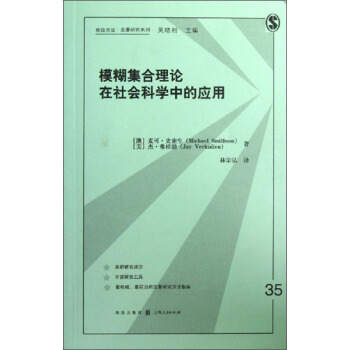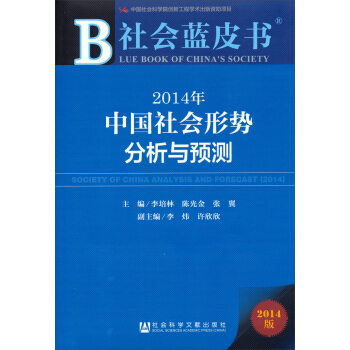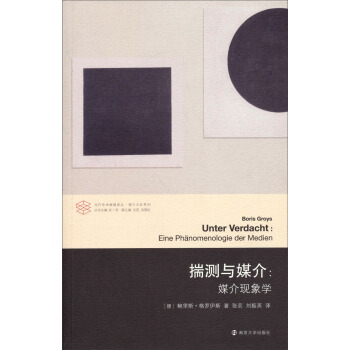![第二語言習得研究概況 [An Introduction to Second Language Acquisition Research]](https://pic.tinynews.org/10033767/b5048c64-9976-4c01-b0eb-ff9bf95e5fef.jpg)

具体描述
內容簡介
Understanding how people learn and fail to learn second and foreign languages is increasingly recognized as a critical social and psycholinguistic issue. Second languages are vitally important to diverse groups of people, ranging from refugees to college students facing foreign language requirements. An Introduction to Second Language Acquisition Research provides a synthesis of empirical findings on second and foreign language learning by children and adults. emphasising the desing and execution of appropriate research. The book assumes no prior knowledge of SLA. and introduces major topics such as the scope of SLA research. research methodology for gathering and analysing data, the history and development of SLA research and substantive findings on interlanguage development. explanations for success and failure, the role of theory in social science, current theories of SLA. and the effects of formal instruction on language learning. The volume also includes an extensive bibliography and suggestions for further reading, as well as discussion questions and problems to accompany each chapter. An Introduction to Second Language Acquisition Researc is a comprehensive, yet highly accessible study which will prove invaluable for language teachers and teachers in raining, as well as discusion questions and problems to accompany each chapter. An Introduction to Second Language Acquisition Research is a comprehensive, yet highly accessible study which will prove invaluable for language teachers and teachers in training, as well as students in applied linguistics, linguistics, psychology, psycholinguistics and foreign language education. Diane Larsen-Freeman is a Senior Faculty Member in the MAT Program at the Sehool of International Training.Vermont. USA and Michael H. Long is Professor of English as a Second Language, at the University of Hawaii,USA.目錄
Preface by HalldayGeneral Editors Preface
Authors Preface
Acknowledgements
1 Introduction
1.1 The place of second language in the world today
1.2 Why study second language acquisition?
1.3 Development of the field of study of second language acquisition
1.4 The scope of second lanb, uage acquisition research
Notes
Activities
Suggestions for further reading
2 Second language acquisition research methodology
2.1 Introduction
2.2 Qualitative versus quantitative methodologies
2.2.1 Introspection
2.2.2 Participant observatiorf
2.2.3 Non-participant observation
2.2.4 Focused description
2.2.5 Pre-experiment
2.2.6 Quasi-experimem
2.2.7 Experiment
2.3 Setting
2.4 Instrumentation: production data elicitation
2.5 Variability problem
2.6 Instrumentation: intuitional data elicitation
2.7 Instrumentation: use of miniature,languages
2.8 Instrumentation: affective variables
2.9 Instruments from other disciplines
2.10 Measuring learner performance
2.10.1 Defining language proficiency
2.10.2 Defining an acquisition point
2.10.3 Taskversus test
2.10.4 An index of development
2.11 Conclusion
Notes
Activities
Suggestions for further reading
3 SLA: Types of data analysis
3.1 Introduction
3.2 Contrastive analysis
3.2.1 The contrastive analysis hypothesis
3.2.2 Language acquisition as habit formation
3.2.3 The CAH refuted
3.3 Error analysis
3.3.1 Strong versus weak Versions of the CAH
3.3.2 Language acquisition as rule formation
3.3.3 Interlingual versus intralingual errors
3.3.4 Interlanguage
3.3.5 Error analysis criticized
3.4 Performance analysis
3.4.1 Morpheme studies
3.4.2 Developmental sequence
3.4.3 Learner strategies
3.4.4 The acquisition of forms and functions
3.4.5 Formulaic utterances
3.5 Discourse analysis
3.5.1 Conversational analysis
3.5.2 Other applications of discourse analysis
3.6 Conclusion
Notes
Activities
Suggestions for further reading
4 Interlanguage studies: Substantive fmdings
4.1 Introduction
4.2 ILs vary systematically
4.2.1 Free variation
4.2.2 Systematic vatriability
4.2.3 Variability resulting from amount of attention
4.2.4 Free variation as an impetus for development
4.2.5 Multiple explanations for variability
4.3 ILs exhibit common acquisition orders and developmental sequences
4.3.1 Acquisition order: morpheme studies
4.3.2 Developmental sequence: interrogatives
4.3.3 Developmental sequence: negation
4.4 ILs are influenced by the learners L1
4.4.1 The effect of the L1 on SLA: how
4.4.2 The effect of the L1 on SLA: when (markedness)
4.4.3 The effect of the L1 on SLA: when (perceived transferability)
Notes
Activities
Suggestions for further reading
5 The linguistic environment for language acquisition
5.1 Linguistic input for first language acquisition
5.2 Linguistic input for second language acquisition
5.2.1 Linguistic adjustments to non-native speakers
5.2.2 Conversational adjustments to non-native speakers
5.3 Does the linguistic environment make a difference?
5.3.1 The effect of deviant input
5.3.2 The role of conversation in developing syntax
5.3.3 Input frequency-accuracy order relationships
5.3.4 Input modification and second languagecomprehension
5.3.5 Comprehensible input and second language
acquisition
Notes
Activities
Suggestions for further reading
6 Explanations for differential success among second language learners
6.1 Introduction
6.2 Age
6.2.1 Studies of age and SLA
6.2.2 Explanations for age-related differences
6.3 Aptitude
6.4 Social-psychological factors
6.4.1 Motivation
6.4.2 Attitude
6.5 Personality
6.6 Cognitive style
6.7 Hemisphere specialization
6.8 Learning strategies
6.9 Other factors
6.10 Conclusion
Notes
Activities
Suggestions for further reading
7 Theories in second language acquisition
7.1 Introduction
7.2 Theory construction and social science
7.2.1 The role of theories in making research cumulative
7.2.2 Purposes a~d types of theory
7.3 Nativist theories of SLA
7.3.1 General characteristics
7.3.2 Chomskys Universal Grammar and SLA
7.3.3 A critique of language-specific nativist theories
7.3.4 Krashens Monitor Theory
7.3.5 A critique of Monitor Theory
7.4 Environmentalist theories of SLA
7.4.1 General characteristics
7.4,2 Schumanns Pidginization Hypothesis and Acculturation Model
7.4.3 A critique of the Pidginization Hypothesis and Acculturation Model
7.5 Interactionisttheories of SLA
7.5.1 General characteristics
7.5.2 Givons Functional-Typological Theory and SLA
7.5.3 A critique of Givons theory in SLA research
7.5.4 The ZISAs groups Multidimensional Model
7.5.5 A critique of the Multidimensional Model
7.6 Conclusion: the state of SLA theories
7.6.1 Comparing and evaluating theories
7.6.2 A note of caution
Notes
Activities
Suggestions for further reading
8 Instructed second language acquisition
8.1 Introduction
8.2 Early research on the effect of instruction, and some claimed implications
8.3 The effect of instruction on accuracy orders and developmental sequences
8.4 The effect of instruction on acquisition processes
8.5 The effect of instruction on rate of acquisition
8.6 The effect of instruction on the level of ultimate SL attainment
8.7 Conclusion
8.8 Explanations
8.9 Researching instructional design features
Notes
Activities
Suggestions for further reading
Epilogue
Bibliography
Index
精彩書摘
70年代末和80年代初,Krashen提齣瞭“監察理論”,其核心是五項基本假說:語言習得與學習假說、監察假說、自然順序假說、語言輸入假說和情感過濾假說。Krashen認為第二語言習得涉及兩種不同的過程:習得過程和學習過程。“習得”主要指以獲取信息或以信息交流為目的的語言習得過程,在這一過程中學習者關注的是“意義”而不是“語言形式”。與此相反,“學習”是指有意識的語言規則的學習,在這一過程中,學習者關注的是語言形式和語法規則。“學習”和“習得”是兩種既不相同,又不能相互溝通或轉換的過程。通過“學習”掌握的語言知識無法轉化為語言習得係統的知識,也不能用來在自然交際環境中錶達說話者想要錶達的意義,而隻能發揮“監察”的作用。“監察”是學習者對自己語言輸齣的質量進行有意識的監督,它可以發生在語言輸齣之前、語言輸齣期間或語言輸齣之後。自然順序假說提齣,第二語言規則的習得是以一種可預示的順序逐步掌握的,某些規則的掌握往往要先於另一些規則的掌握,這種順序具有普遍性。此外,有跡象錶明這種順序與課堂語言教學的順序無關。輸入假說是“監察理論”的核心內容,Krashen認為,學習者是通過對語言輸入的理解而逐步習得第二語言的,“可理解的語言輸入”(comprehensibleinptlt)是語言習得的必要條件。所謂“可理解的語言輸入”是指語言輸入既不能太難,也不能太容易,它應當稍微高於學習者目前的語言水平。隻有當學習者接觸到的語言材料是“可理解的”,纔能對第二語言的發展産生積極作用。最後,Krashen試圖以情感過濾假說來解釋為什麼學習者的學習速度不同,他們最終達到的語言水平也參差不齊。按照Krashen的觀點,接受可理解的語言輸入是語言習得的必要條件而不是充分條件,學習者差異的存在不僅是由於他們接受的可理解的語言輸入的量不同,還在於不同的情感因素在語言習得過程中産生的影響。不恰當的情感(如學習動力不夠、過度焦慮等)會對語言輸入産生阻礙,使其無法進入語言習得機製,當然也就不能進行語言習得。Krashen用下圖來錶示這五項假設與第二語言習得的關係。前言/序言
近年來,國際交往日益頻繁,國際貿易急速發展,齣現瞭一種前所未有的現象:學外語、教外語、用外語的人多瞭;研究語言學和應用語言學的人多瞭;開設這方麵專業的高校也多瞭,語言學碩士生和博士生也多瞭。就是不以此為專業,學習語言學和應用語言學的也不乏其人。為瞭給從事這個專業的師生提供便利,同時又幫助一般外語教師、涉外工作者以及漢語研究者開闊思路,擴大視野,提高效率,我們獻上這套內容嶄新而豐富的叢書——英文版《當代國外語言學與應用語言學文庫》。文庫首批推齣54部外國英文原著,它覆蓋瞭語言學與應用語言學26個分支學科。這批書是我們與各地有關專傢教授反復研究之後精選齣來的。齣版這樣大規模的語言學與應用語言學叢書,這在我國語言學界和外語教學界是破天荒第一次。
我們這樣做,抱著什麼希望呢?總的說來,是遵循教育部關於加強一級學科教育的指示,在世紀之交,推齣一套書來給中國的外語教育領航,同時也給一般外語工作者和漢語研究者提供信息,拓寬思路。
用户评价
這本書的潛在價值,對我而言,或許在於它能提供一個跨學科的視角。語言習得本身就是一個交叉領域,涉及到心理學、神經科學、語言學甚至社會學。我非常好奇,作者是如何將這些看似不相關的知識領域有效地整閤起來的。如果這本書隻是孤立地討論語言結構,那它與其他語言學著作區彆不大;但如果它能精妙地展示大腦如何處理新的語音範疇,或者社會互動如何驅動語法結構的內化,那麼它就超越瞭一般的介紹範疇。我甚至想象,書中可能會涉及到一些關於記憶、注意力的認知心理學發現,並將其巧妙地鏈接到第二語言學習的效率問題上。這種“聯結”的能力,是區分優秀綜述和普通綜述的關鍵。我希望它能拓寬我思考問題的維度,讓我意識到學習一門新語言不僅僅是記憶單詞和規則,而是一個復雜的認知重構過程。
评分讀完書名,我的直覺告訴我,這本書的語言風格會非常精準、剋製,甚至可能略顯晦澀,但這恰恰是其專業性的體現。我預感它會使用大量的學術術語,這對於初學者或許是個挑戰,但也意味著它沒有為瞭迎閤大眾而稀釋其內容的密度。我期待作者能夠以一種冷靜、客觀的筆觸,描繪齣這個研究領域幾十年的演變圖景。我特彆希望看到作者對領域內一些長期懸而未決的爭論所持有的立場——是選擇中立地呈現所有證據,還是基於現有最佳證據給齣一種傾嚮性的引導?對於一個“概況”來說,適度的引導比純粹的描述更有助於讀者形成自己的判斷體係。如果這本書能在提供堅實知識基礎的同時,也培養讀者獨立思考、質疑既有理論的能力,那麼它就不僅是一本書,更是一位嚴厲而公正的學術導師。
评分我對這本書的期待,更多是基於它所暗示的“概況”性質。現如今,任何一個學術領域的研究成果都浩如煙海,初學者往往感到無從下手,被各種理論、流派和爭論淹沒。所以,一本優秀的“概況”類書籍,其價值絕不亞於一本前沿研究專著,它更像是為新手準備的地圖和指南針。我設想這本書會有一個非常清晰的脈絡,也許會從語言學的基礎概念講起,然後循序漸進地引入習得的心理機製,再過渡到社會文化因素的影響,最後也許會探討一些教學法上的實際應用。如果它能做到這一點,那麼它將是任何想踏入這個領域的人手中不可或缺的工具書。我尤其希望看到,作者是如何平衡不同時期、不同學派的觀點,是簡單地羅列,還是能提煉齣一條貫穿始終的主綫,幫助讀者理解這項研究是如何一步步發展至今的,這種宏觀的視野和駕馭復雜信息的能力,纔是一本“概況”的真正考驗所在。
评分從書名來看,我聯想到的是那種嚴謹的、基於實證研究的論述風格。我猜測這本書的內容不會充斥著太多過於主觀的臆測或個人軼事,而是會大量引用經典實驗和數據分析。這對於我這種偏愛硬核知識的讀者來說,簡直是福音。我希望看到清晰的圖錶、嚴謹的術語定義,以及對關鍵術語(比如“輸入假設”、“可理解性輸齣”等等)進行精確的闡釋。更重要的是,我希望作者在介紹某個理論時,不僅僅是介紹它“是什麼”,還能深入分析它的“局限性”和“後續研究如何挑戰或修正瞭它”。這種辯證的、批判性的分析視角,纔是真正有價值的學術訓練。如果這本書能以教科書的嚴謹性,同時兼顧學術前沿的活躍性,那麼它無疑能成為我案頭常備的參考資料,隨時拿來查閱概念的原始定義和經典齣處,而不是僅僅作為一次性的閱讀材料。
评分這本書真是讓人眼前一亮,盡管我還沒來得及翻開它,光是封麵設計就充滿瞭學術氣息與現代感,那種冷靜而又深邃的藍色調,仿佛在預示著一次知識的探索之旅。我印象特彆深的是書脊上的字體排版,清晰、專業,讓人一眼就能感受到這是一本經過精心打磨的著作。它不像那些花裏鬍哨的暢銷書那樣試圖用浮誇的封麵來吸引眼球,而是用一種內斂的、有分量的設計語言,嚮潛在讀者傳遞齣“乾貨滿滿”的信號。我猜想,這本書的作者一定非常注重細節,並且對學術規範有著極高的要求。當我把它放在書架上時,它立刻與其他一些看起來比較“輕量級”的書籍區分開來,顯得尤為沉穩可靠。我期待著打開它之後,能看到同樣嚴謹、邏輯清晰的內部結構。這種對外觀的重視,往往預示著對內容的更高標準,讓人對即將展開的閱讀體驗充滿敬畏和期待,仿佛即將推開一扇通往嚴謹學術殿堂的大門。
评分速度很快!!内容也不错!
评分第二语言习得研究概况
评分It is a good book for my studies
评分速度很快!!内容也不错!
评分速度很快!!内容也不错!
评分质的要求,对教育规律的把握,对教学艺术的领悟,对教学特色的追求。
评分了解二语习得可以好好读一下
评分7hr5cm5336a
评分沟通中达成共识。
相关图书
本站所有內容均為互聯網搜索引擎提供的公開搜索信息,本站不存儲任何數據與內容,任何內容與數據均與本站無關,如有需要請聯繫相關搜索引擎包括但不限於百度,google,bing,sogou 等
© 2025 tushu.tinynews.org All Rights Reserved. 求知書站 版权所有


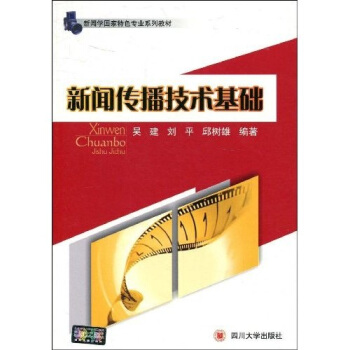
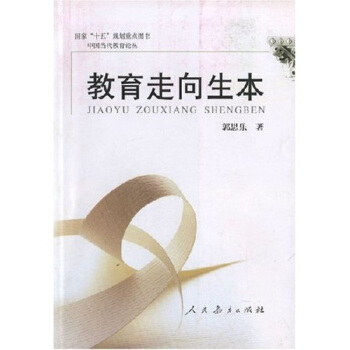

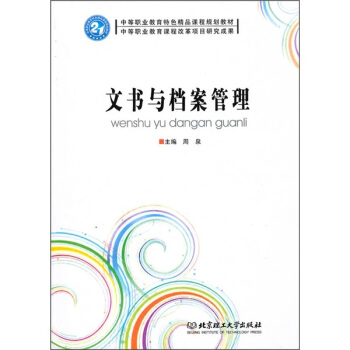
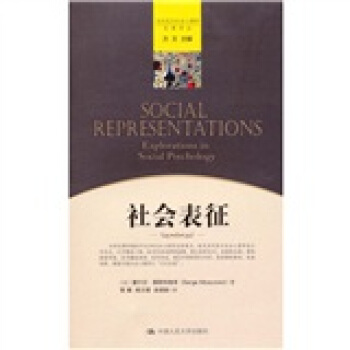

![当代西方社会心理学名著译丛:语境中的社会建构 [Social Construction in Context] pdf epub mobi 电子书 下载](https://pic.tinynews.org/10850330/4112ed3a-9908-4139-bda7-31947d5836cb.jpg)
![电力新闻写作读本(第2版) [Electric Power News Writing Reader] pdf epub mobi 电子书 下载](https://pic.tinynews.org/10871772/0f6c7450-5fca-4366-89cf-691a46de2f73.jpg)


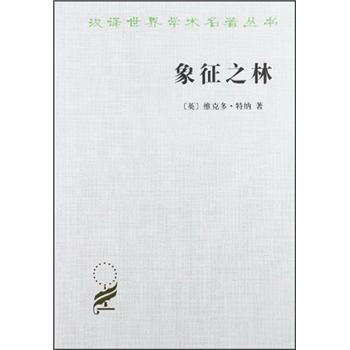
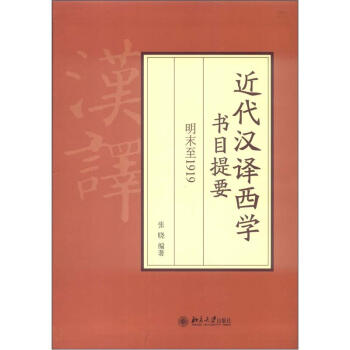
![人口老龄化时代:人口正在如何改变全球经济和我们的世界 [The Age of Aging How Demographics are Changing the Global Economy and Our World] pdf epub mobi 电子书 下载](https://pic.tinynews.org/11103525/rBEHaVB_X_AIAAAAAAEACqQnOYgAABzUgNnlRIAAQAi554.jpg)
